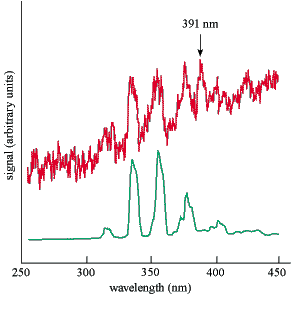Author
Array
(
[0] => linkedin
[1] => facebook
[2] => twitter
[3] => google-plus
[4] => youtube
)
Array
(
[0] => linkedin
[1] => facebook
[2] => twitter
[3] => google-plus
[4] => youtube
)
Array
(
[0] => linkedin
[1] => facebook
[2] => twitter
[3] => google-plus
[4] => youtube
)
Array
(
[0] => linkedin
[1] => facebook
[2] => twitter
[3] => google-plus
[4] => youtube
)
Array
(
[0] => linkedin
[1] => facebook
[2] => twitter
[3] => google-plus
[4] => youtube
)
No Author
Author archive

Schawlow was born in New York and educated at the University of Toronto, where he received his first degree in 1941 and his PhD in 1949. After a spell at Columbia University, where he worked with Charles Townes, he moved to Bell Laboratories in 1951, where he worked mostly on superconductivity. However, he continued to […]

The IPP runs a tokamak called ASDEX and is also building a stellarator fusion device known as Wendelstein 7-X at it lab in Greifswald. If ITER is built in Japan, Bradshaw says he will lobby for Garching to become the European control room. He also hopes to upgrade ASDEX. “After the Joint European Torus is […]

Cosmic rays are particles from outer space that continually bombard the Earth. The nature and origin of cosmic rays with energies below 1015 eV are well understood. However, physicists have no idea of what the highest-energy cosmic rays, which have energies of more than 1020 eV, are made of, or how they are accelerated. These […]

Li-Jun Wu from Columbia University and colleagues from Colorado State University and the Chinese Academy of Sciences used the radiological research accelerator at Columbia to pass precise quantities of alpha particles through the cytoplasm. They found that it only required eight alpha-particle “hits” in the cytoplasm to increase the normal level of mutations by a […]

Landauer was born in Stuttgart in 1927 but had to leave Germany because his family was Jewish. He studied physics at Harvard University in the United States and joined IBM after two years at the National Advisory Committee for Aeronautics (the body which later became NASA). At IBM Landauer became interested in the fundamental limits […]
 Read article: Light plays tricks with nuclei
Read article: Light plays tricks with nuclei
Just as electrons can be excited inside an atom, neutrons and protons can be excited from their ground states into higher-energy states inside the nucleus. If these states have long half-lifes then they are called nuclear isomers. In general such long-lived nuclear states are also associated with other unusual properties. In addition to their fundamental […]

ALMA will gather highly red-shifted radiation from the furthest stars and galaxies, and will allow astronomers to observe cool dark objects such as brown dwarfs and interstellar dust clouds. The ALMA team hope to achieve a resolution as good as the Hubble Space Telescope but for sub-millimetre images. The site at Chajnantor, in the Atacama […]

ESA’s ruling body – the council of ministers – will meet later this month to discuss the agency’s budget for the next four years. Antonio Rodotà, ESA’s director general, will ask ministers for a total of Euro 1.85bn (about £1.2bn) for the science programme and a further Euro 759m for the Earth observation programme during […]

Johnson and colleagues specified “winners and losers” by making the “agents”, as the individuals are called, repeatedly choose between two rooms. Choosing the room denotes a “trader” buying or selling shares, or a car driver picking one out of two routes home. The room which has the fewest traders in it at the end contains […]
 Read article: World’s most expensive sundial
Read article: World’s most expensive sundial
The aluminium sundial features rings representing the orbits of Mars and Earth, and red and blue dots showing the position of the two planets at the time of the landing. Once safely installed on Mars, the sundial will relay local Martian time to a Web-site. And in a week in which Germany hosted a conference […]
Copyright © 2025 by IOP Publishing Ltd and individual contributors


